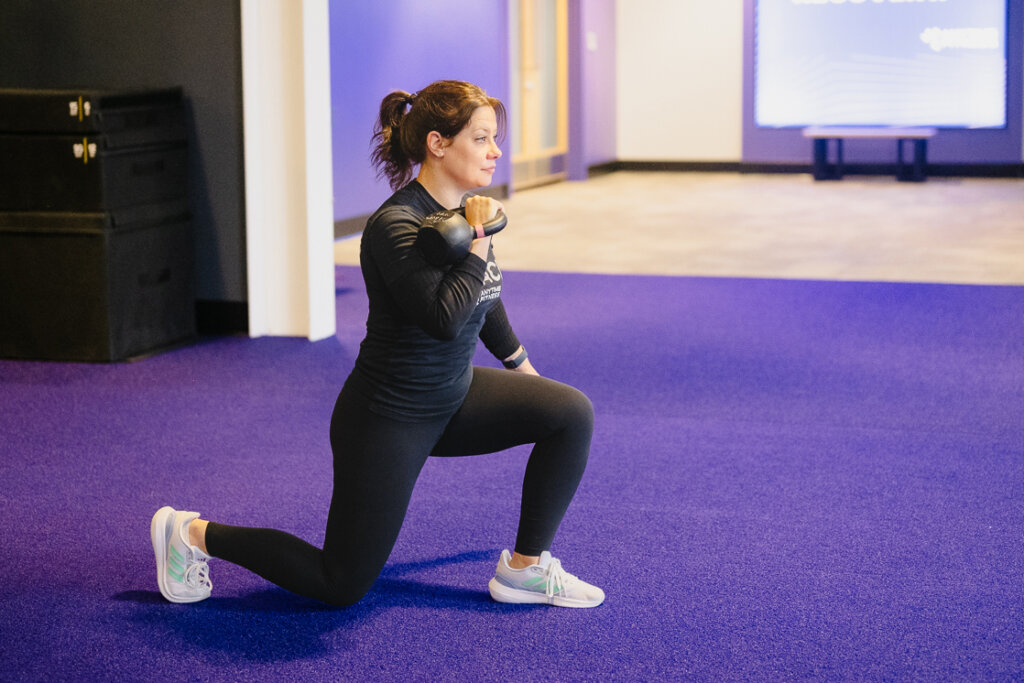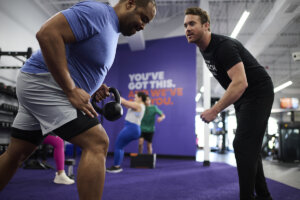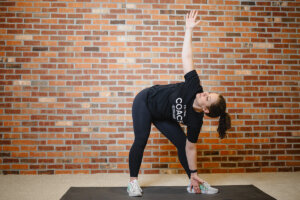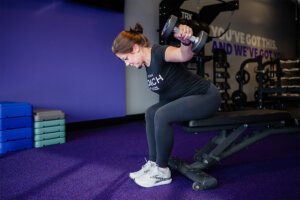Everyone has different motivations for exercising, whether that is to lose weight, gain muscle, or feel better in your body. But another key reason to prioritize exercise is to stay healthy and active long term. Fortunately, there are specific exercises that can help you achieve this. They fall under the category of “functional training,” which is a form of exercise that can help you maintain the ability to perform basic, everyday tasks as you age.
Let’s explore what functional training is, how it differs from other types of exercise, and its benefits. We’ve even included a functional training workout to add to your gym routine.
What is functional training?
Functional fitness is a type of strength training that helps your body perform daily activities. These exercises equip you for the most important type of physical fitness: the kind that preps you for real-life, day-to-day actions like bending, twisting, lifting, loading, pushing, pulling, squatting, and hauling.
Most functional fitness contains multi-joint movement patterns that involve your knees, hips, spine, elbows, wrists, and shoulders, which all build strength and improve your range of motion. It may sound simple, but ensuring your body is equipped to handle these movements is a key part of preventing injury and maintaining your health and quality of life as you age — and it’s never too early to start.
Benefits of functional training
Technically speaking, functional exercise serves to reinforce proper movement patterns of the body. When you’re able to maintain proper posture during movements, have proper motor control over your body, and have proper mobility, your body can move more efficiently throughout various movement patterns, such as pushing, pulling, squatting, rotating, and more.
Here are some other amazing benefits of functional training:
- Increased balance and stability: Functional training improves balance by engaging multiple muscle groups simultaneously and mimicking real-life movements that require coordinated muscle activation. Essentially, it trains your body to move with better coordination and stability across various planes of motion.
- Decreased risk of injury: Improving your functional fitness helps make everyday tasks easier in addition to reducing your risk of injury. When your body is better prepared to take on everyday movements like bending and lifting, for example, you may be less likely to injure or pull a muscle when performing those everyday movements.
- Increased strength: Because functional training targets multiple muscle groups at once, it’s a way to boost overall strength and prepare your body for everyday tasks which often engage multiple muscles, too.
Think of gardening, for example: if you’re shoveling dirt in a flower bed, you’re not just using your biceps to move the shovel, you’re using both your upper body and lower body — your legs (quads) to push the shovel into the dirt, your lower back to bend over, and your shoulders and abs to lift and throw the dirt.
Plus, the majority of functional exercises use your core, and a strong core is a key component of total-body strength.
How does functional training differ from other types of exercise?
So, how does functional fitness work? Unlike traditional strength training, which isolates individual muscles for targeted strength gains, functional strength training emphasizes compound exercises that mimic real-world movements. Additionally, the main purpose of functional strength training is to improve the quality of the body’s movement. This differs from many other forms of exercise, which are geared at improving performance outcomes such as lifting more weight or improving running pace, for example.
What is the difference between traditional and functional strength training?
Traditional strength training involves exercises that help develop maximal strength. That is: to get stronger and be able to lift heavier weights over time. This includes both multi-joint, compound exercises such as the squat and deadlift but can also include isolation exercises that focus on one muscle group at a time, such as the bicep curl.
Functional strength training, on the other hand, involves exercises that help improve the quality of functional movements, including fundamental movement patterns such as pushing, pulling, squatting, rotating, and more. In other words: it’s less about being able to lift more weight over time, and more about being able to improve how you lift, pull, and bend so you maintain the ability to perform those movements over time.
Is functional strength training the same as HIIT?
No, functional training and HIIT are two different types of training. While they are both effective ways to improve your overall fitness, they differ in a few key ways:
- Goals: Functional fitness helps improve your overall strength, mobility, and ability to perform daily activities. HIIT is better suited for people who want to enhance their cardiovascular fitness, burn calories, or gain strength.
- Format: Functional workouts typically involve longer sessions that incorporate movements which mimic real-life activities. HIIT workouts tend to be shorter, higher-intensity sessions involving periods of high effort followed by periods of recovery.
Benefits: Functional training helps promote functional ability and quality of life, while HIIT may burn more calories or offer greater cardiovascular benefits.
What are the main challenges of functional training?
For many, the main challenges of functional training are knowing what to do and how to do it! The focus of functional training is to improve fundamental movement patterns, but if you’re not sure what those should look and feel like, you might be wondering, “Am I doing this right?”
This is another reason why working with a fitness professional such as an Anytime Fitness Coach is a great strategy that provides short- and long-term benefits. From recommending exercises that fit your goals to teaching you proper form and providing motivation along the way, the challenges of functional training are so much easier to overcome when working with a Coach.
How can you get the most out of functional training?
When performing functional training exercises, it’s important to follow these guidelines:
- Focus on form. As is true with all forms of exercise and strength training, correct form is crucial to minimize injury and ensure your muscles are properly engaged to maximize your results.
- Add variety. Try different exercises that use different pieces of equipment — such as kettlebells, resistance bands, suspension trainers, and more — and also try bodyweight exercises, too.
- Listen to your body. Avoid overtraining and don’t ignore signs of pain or fatigue. Functional training sounds simple, but it still requires paying attention to your body.
Pro tip: An Anytime Fitness Coach can work with you to do a fitness consultation and movement assessment. From there, you’ll work together to develop personalized recommendations for your training program to help you make progress in your desired areas, whether that be strength, balance, mobility, or overall body awareness — all of which are a part of functional movement.
Functional training workout to improve performance
If you’re looking for ways to incorporate functional fitness workouts into your exercise routine, we’ve got you covered. In general, functional training focuses on exercises that use multiple muscle groups at once, called “compound movements.” Get started with this workout.
Push-Up
This tried-and-true favorite doesn’t require any equipment, and it’s a fantastic way to boost your total-body strength. Be sure to keep your back flat and your hips in line with your shoulders throughout.
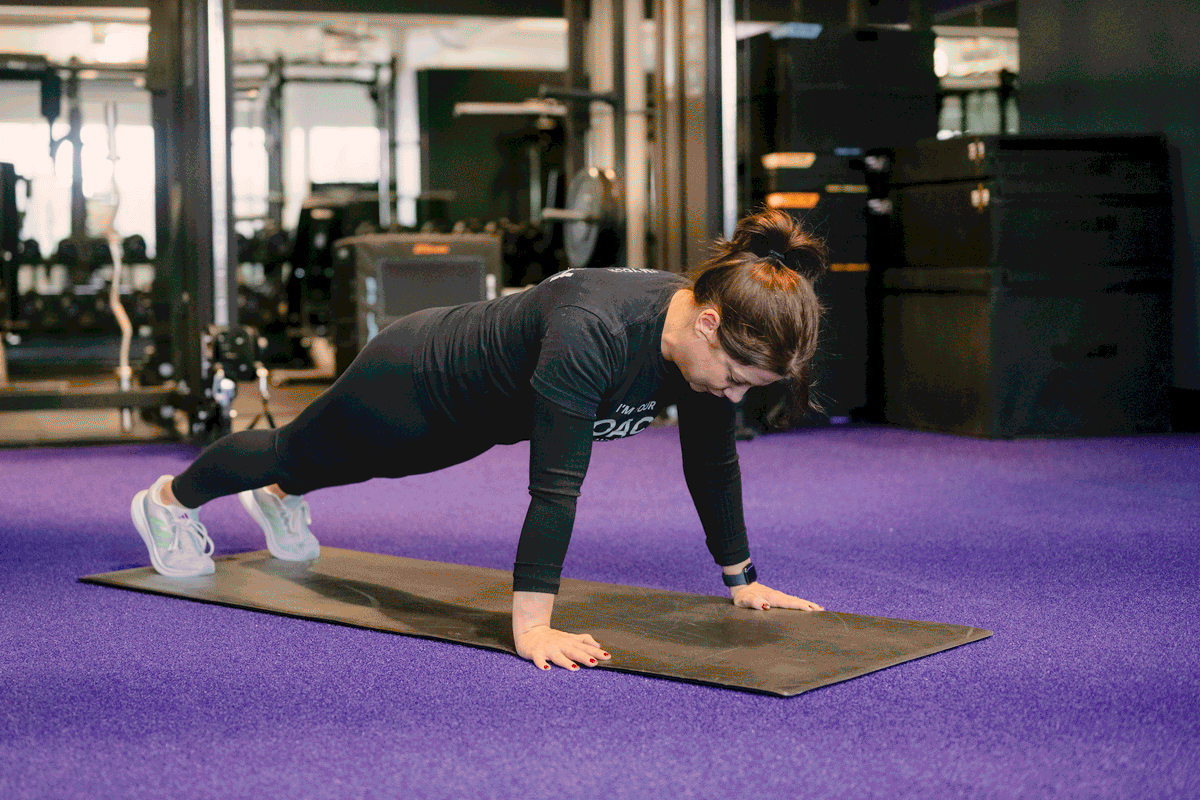
How to:
- Support your body on your toes and hands with your elbows bent, legs straight out behind you, and your chest nearly touching the floor.
- Push up to a straight arm position.
- Slowly lower your body back to the starting position and repeat.
Perform 3 sets of 8–12 reps.
Dumbbell Bent-Over Row
Grab a set of dumbbells and get ready to build back strength with this powerhouse move.
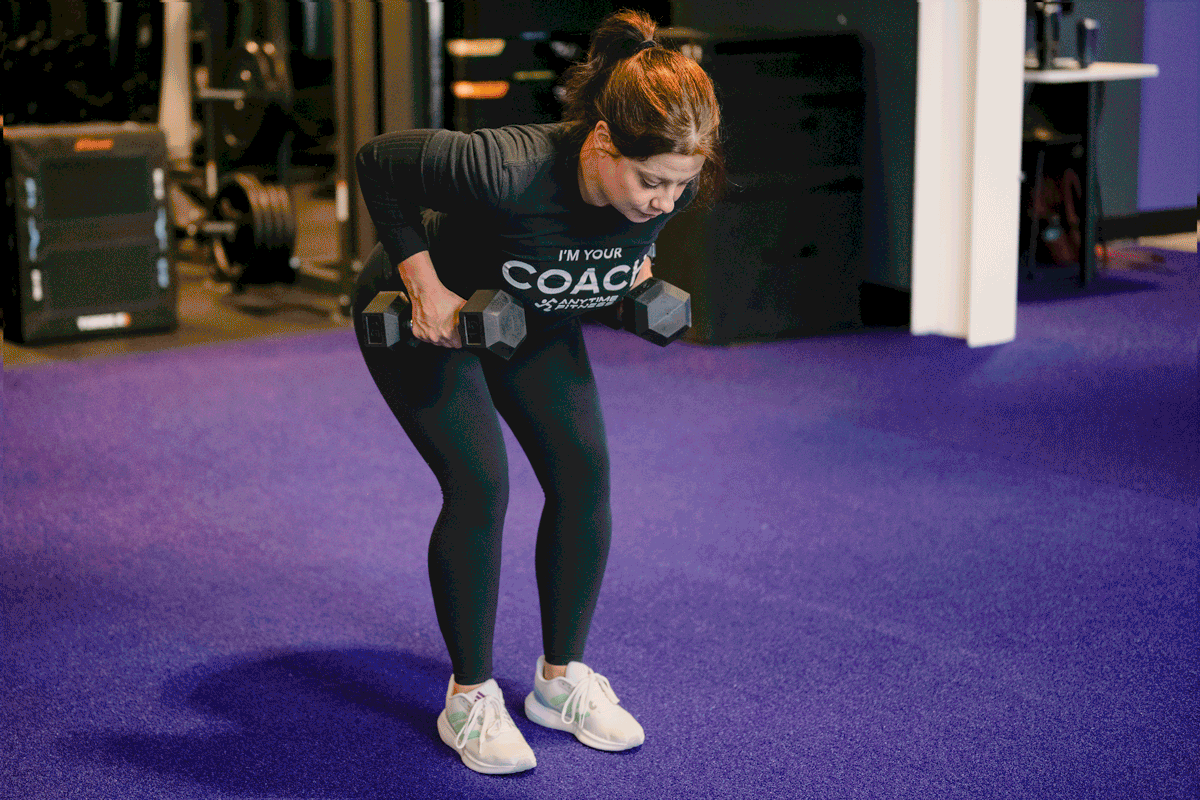
How to:
- Bend forward at your waist with your knees slightly bent and your back flat, holding a set of dumbbells with your arms straight and palms facing in.
- Lift the dumbbells up to the sides of your chest, keeping your elbow tight to your body and bent at a 90-degree angle.
- Lower the dumbbells back to a straight arm position, keeping your back flat throughout.
Perform 3 sets of 8–12 reps.
Kettlebell Goblet Squat
Not only does this move build core strength, but it can also help increase your flexibility and range of motion throughout your hips, ankles, and thoracic spine. Grab your kettlebell and get ready for this multi-tasking move.
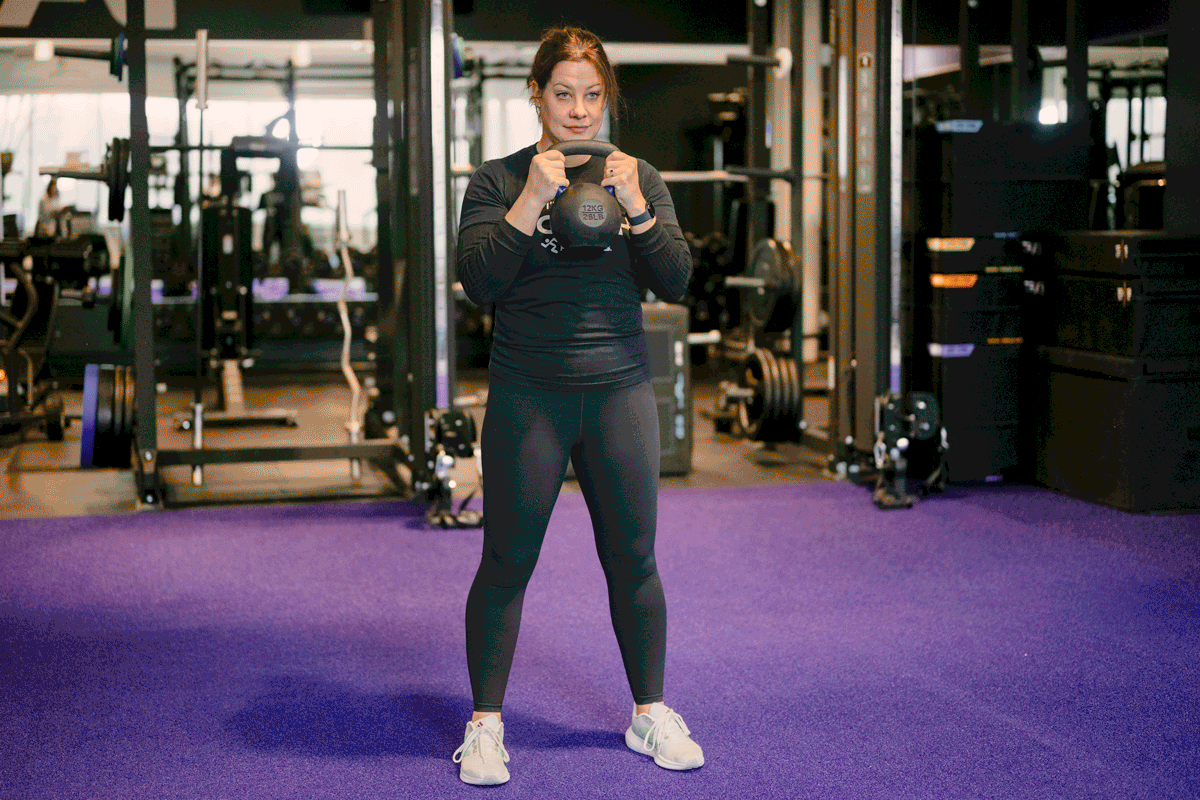
How to:
- Standing upright, hold a kettlebell in a goblet position at chest height.
- Bend your hips and knees to squat, keeping your weight at chest level.
- Drive the hips up and forward, extending your legs fully.
- Repeat.
Perform 3 sets of 8–12 reps.
Reverse Lunge to Press
You’ll also use a kettlebell for this exercise, which boasts a range of benefits, including improved balance and coordination and enhanced stability in the hips and knees.
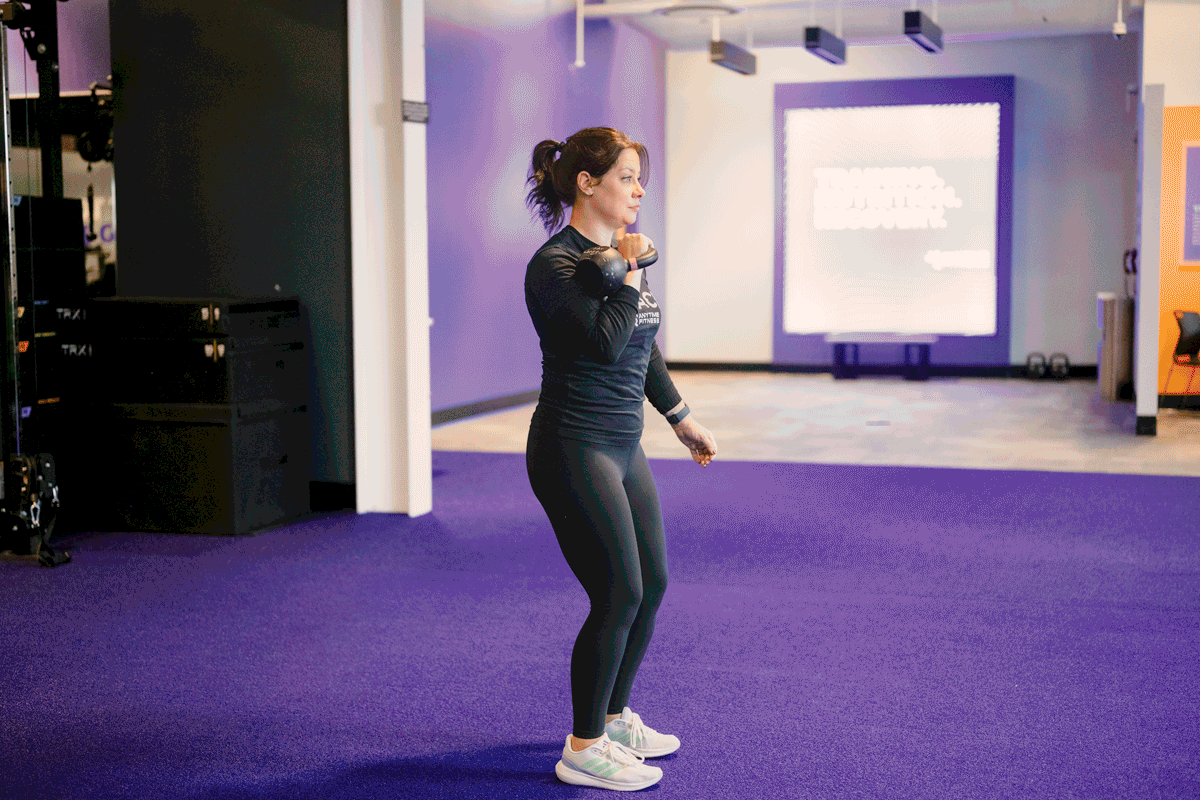
How to:
- Stand upright holding a kettlebell in one hand at shoulder height.
- Step back on one leg, dropping your knee down to the floor and keeping your torso upright with the kettlebell at shoulder level.
- Push off your front foot, coming back up to the starting position and press the kettlebell straight up overhead, extending your arm fully.
- Lower the kettlebell back to your shoulder and repeat.
Perform 3 sets of 8 reps per side. Be sure to complete all reps on one side before switching to the other side.
Suitcase Deadlift
This exercise helps with core stability while building up the major muscle groups. For the weight, you can use a dumbbell, kettlebell, or barbell.
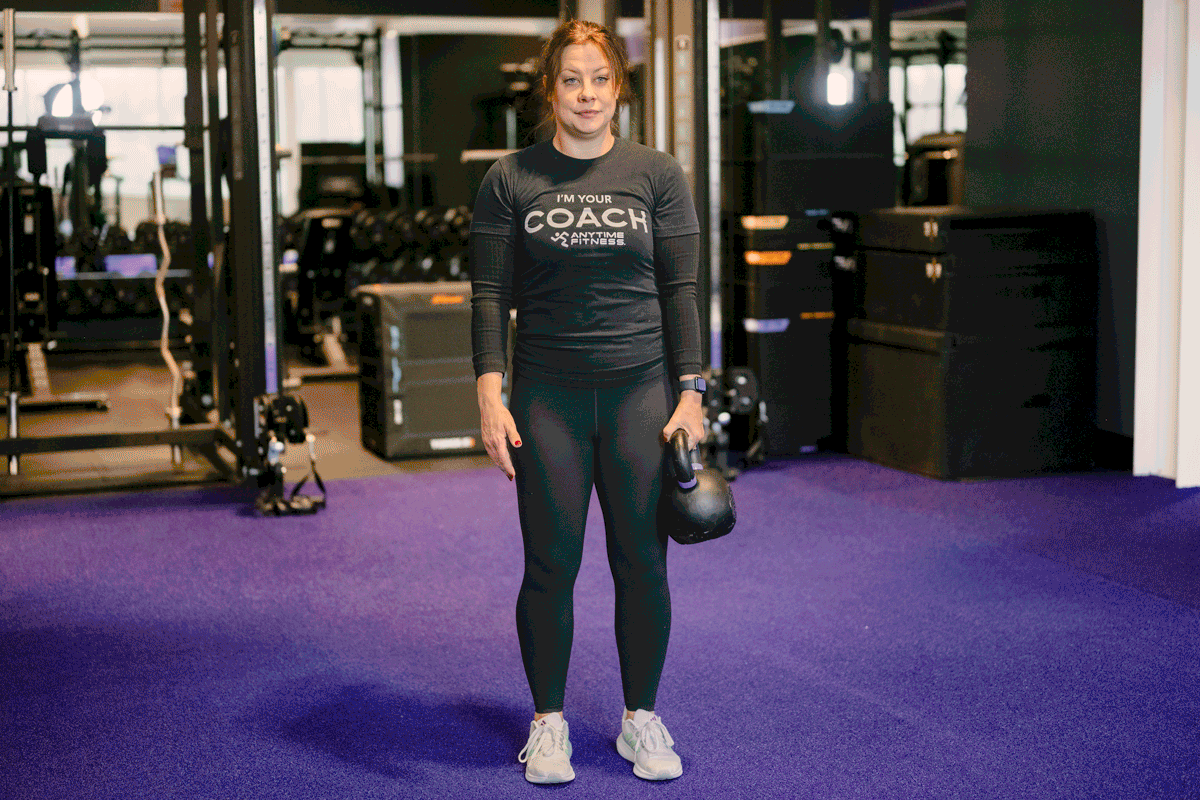
How to:
- Start in a hip-width stance, holding the weight to one side.
- Hinge the hips back and flex the knees while keeping the back flat, lowering the weight toward the floor. Be sure to keep the weight close to the body.
- Drive the hips up and forward, returning to the starting position.
- Repeat.
Perform 3 sets of 8 reps per side. Complete all reps on one side before switching to the other side.
Medicine Ball Low to High Chop
This full-body exercise conditions the glutes, legs, back, core, and shoulders all at once, while using a medicine ball of your preferred weight.
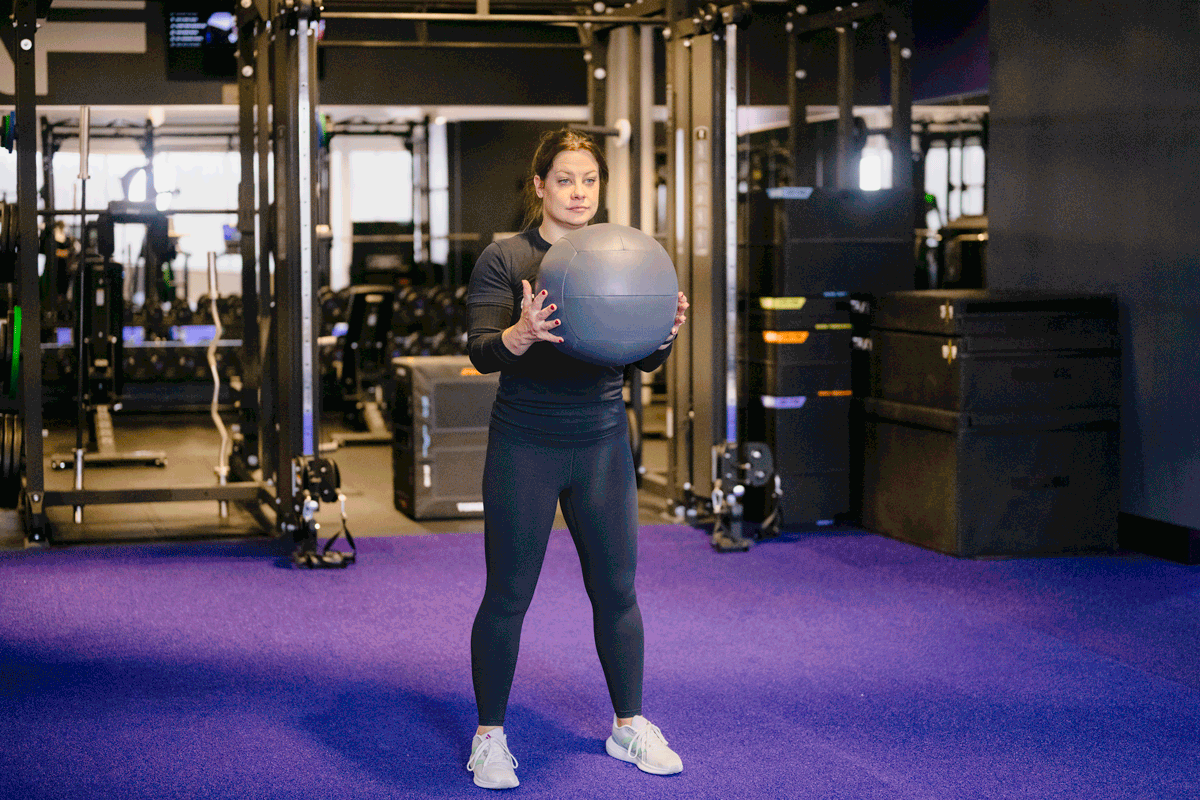
How to:
- Perform a squat while holding the ball to one side in both hands, keeping your arms straight at knee level.
- Raise the ball up from your hip, across your body to the opposite shoulder. Keep your arms straight.
- Slowly lower the medicine ball back to the starting position and repeat.
Perform 3 sets of 8 reps per side. Complete all reps on one side before switching to the other side.
A final word on functional training
Regardless of your age or fitness level, incorporating functional training into your fitness plan ensures you’ll be able to lift, bend, stretch, and move well as you age. By prioritizing functional strength training, you’re making a sound investment in your overall health for years to come.
More workouts for better strength and performance
Get personalized recommendations and a fitness, nutrition, and recovery plan tailored to your needs and goals. Work with an Anytime Fitness Coach to get started.
